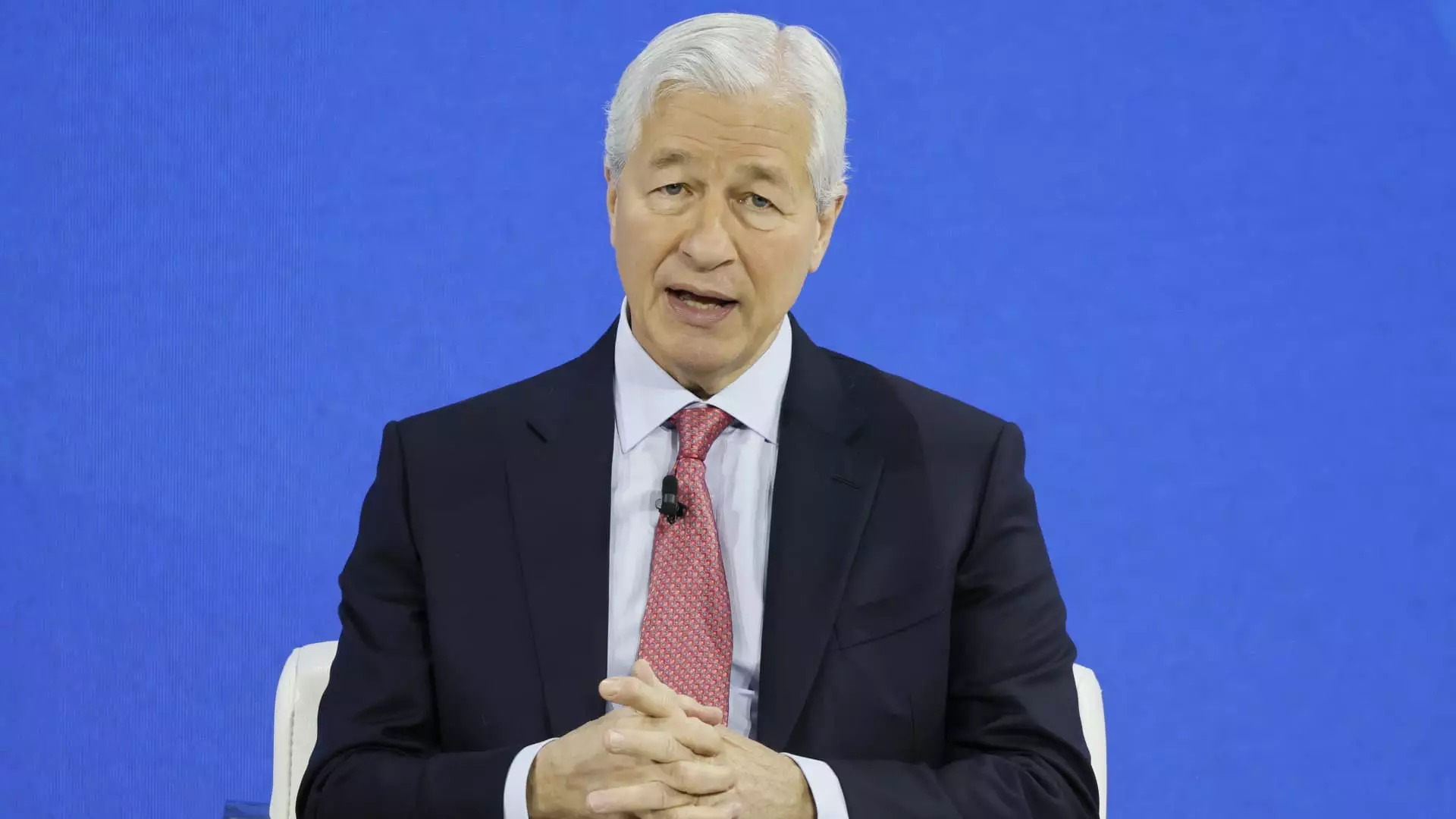JPMorgan Chase recently announced its third-quarter earnings, showcasing impressive results that surpassed analyst expectations in both profit and revenue. This comprehensive examination of the report not only highlights the bank’s financial outcomes but also contextualizes the broader implications of these results in a changing economic environment.
In the latest earnings report, JPMorgan disclosed earnings of $4.37 per share, which comfortably beat the $4.01 per share forecast by analysts. The company’s revenue reached $43.32 billion, a marked increase from the estimated $41.63 billion. However, it’s critical to note that although revenue increased by 6% compared to the previous year, profits fell by 2% to $12.9 billion, signaling underlying challenges amidst the success.
The rise in net interest income, which climbed 3% year-on-year to $23.5 billion, was particularly noteworthy. This growth surpassed expectations, indicating a robust performance driven by investment securities and growth within the credit card sector. These figures suggest that while overall profits have dipped slightly, strategic moves in sectors such as credit cards have played a pivotal role in maintaining revenue growth.
JPMorgan’s CEO, Jamie Dimon, took the opportunity in his statement to underscore potential risks posed by regulatory measures aimed at enhancing the banking sector’s capital reserves. The expansion of these regulations signifies a complex environment for financial institutions, which must balance compliance with profitability. Dimon’s perspective emphasizes the necessity for regulations to foster a healthy economic landscape—cautioning that stringent measures without strategic review could inadvertently stifle growth.
His call for a reassessment of existing financial laws reflects a broader discourse within the industry regarding how best to ensure financial stability without hampering economic momentum. As regulatory adaptations loom, JPMorgan’s leadership appears poised to address these changes proactively, ensuring that the bank remains resilient.
Investment banking also emerged as a significant contributor to JPMorgan’s strong financial performance. The division reported a 31% increase in fees, reaching $2.27 billion for the quarter, comfortably surpassing projections. This indicates not only a rebound from past market uncertainties but also suggests a renewed investor confidence that should be carefully monitored moving forward.
Moreover, trading revenues illustrated a mixed bag—fixed income trading remained stable at $4.5 billion, while equities trading surged by 27% to $2.6 billion. These results are reflective of the bank’s ability to adapt to market fluctuations and leverage opportunities during volatile conditions, which is a strong indicator of its long-term strategic planning.
Looking ahead, questions loom over JPMorgan’s capability to navigate the anticipated changing interest rates. The financial sector as a whole faces the challenge of adjusting to potential decreases in net interest income as the Federal Reserve begins to cut rates, leading to fears of squeezed profit margins. JPMorgan had previously tempered its forecasts for 2025, hinting at a cautious outlook amid uncertain economic dynamics.
CFO Jeremy Barnum’s comments about credit loss provisions, which amounted to $3.1 billion—exceeding expectations—also introduce an element of caution. Although he reassured that consumer conditions remain relatively stable, the increase in reserves reflects a proactive approach to potential future losses. This strategic foresight aligns with the broader context of sustained economic unpredictability, especially as the financial markets adjust.
JPMorgan Chase’s third-quarter performance illustrates a mixture of resilience amid profit pressures and strategic growth in specific sectors. The bank’s approach to addressing regulatory changes and adapting to a shifting interest rate environment will be crucial in maintaining its competitive edge. While the current results are impressive, the challenges posed by regulatory scrutiny and market fluctuations will likely shape JPMorgan’s path going forward. Thus, as investors and stakeholders look ahead, understanding the intricate balance between growth opportunities and potential risks will be key to navigating the complex financial landscape.

Leave a Reply